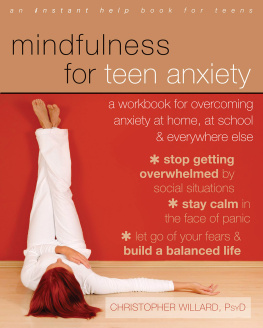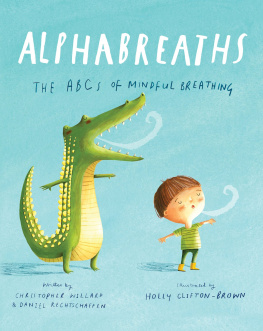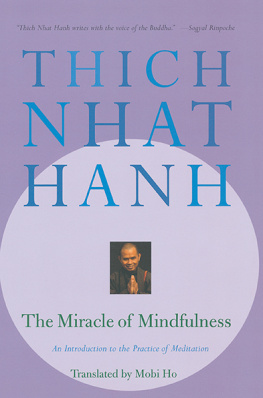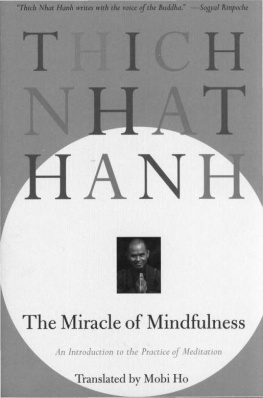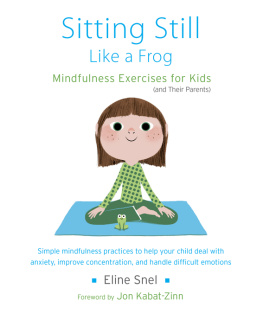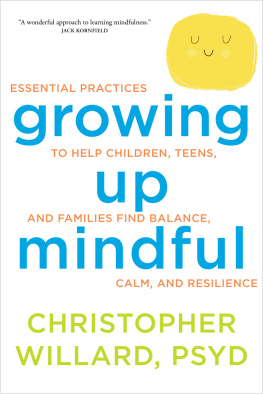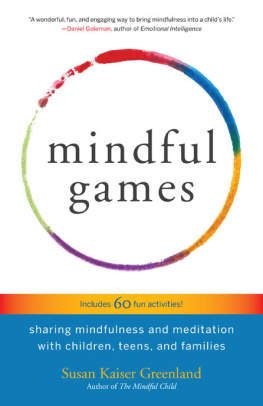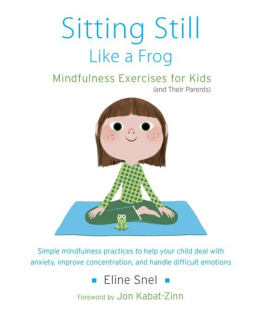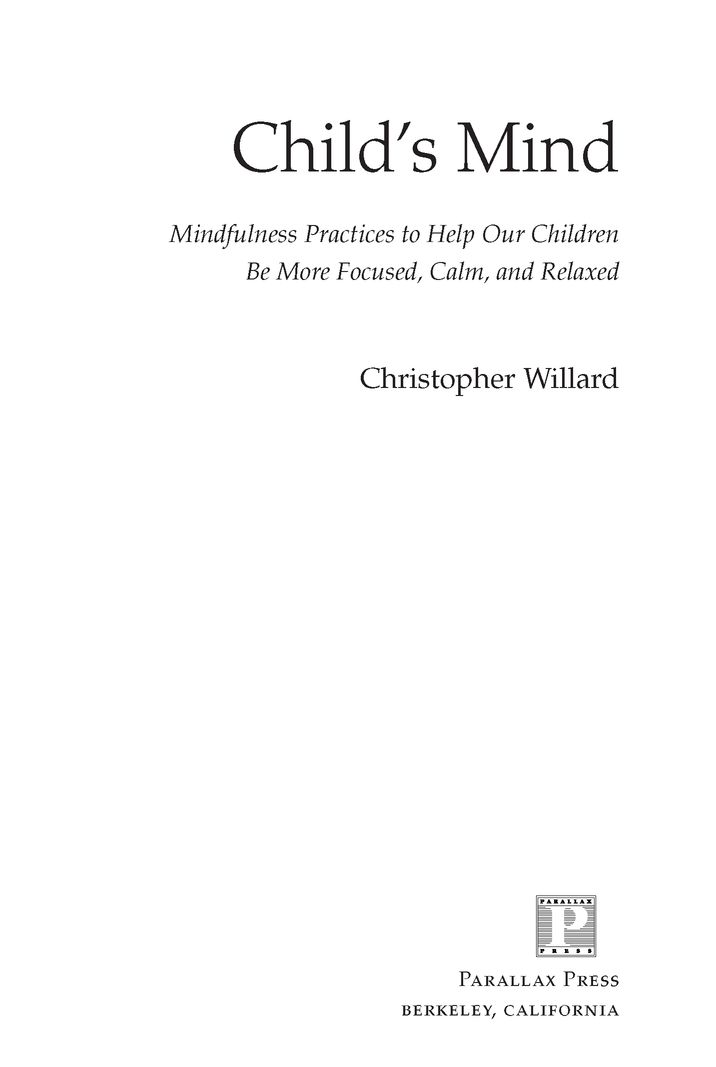Table of Contents
Praise for Childs Mind
Christopher Willards delightful book Childs Mind makes the wonder and transformative power of mindfulness meditation accessible to everyone. His elegantly simple practices are a joy to read and will impact kids and families for generations to come.
Susan Kaiser Greenland, author of The Mindful Child
Teaching mindfulness to children sounds great in theory, but really, how do we do it? This wonderful book, chock full of mindfulness practices adapted to children of all ages, is the answer! Christopher Willard offers us skillful advice, illuminating words, and a treasure chest of practices for schools, clinicians, and our own familys kitchen table.
Diana Winston, Director of Mindfulness Education at the
Mindful Awareness Research Center of UCLA and
author of Wide Awake: A Buddhist Guide for Teens
This book is an excellent resource for parents, teachers, and healthcare providers who want to share the benefits of mindfulness with children. The varied practices are presented with clarity and joy, making them both accessible and engaging.
Amy Saltzman, M.D., Association for Mindfulness in Education
and creator of the Still Quiet Place CD series
As a parent and teacher, I am deeply grateful for Christopher Willards book. It is an important contribution toward making the practice of meditation an integral part of the school curriculum and, more generally, toward raising healthier, happier children.
Tal Ben-Shahar, Harvard University, author of Happier
Childs Mind is an invitation to raise children who grow up relating to themselves, others, and the world around them with care and compassion. Parents and teachers looking for practical advice for teaching mindfulness to children will find it here.
Paul R. Fulton, Institute for Meditation and Psychotherapy
If youre considering how to bring mindfulness into the lives of children, this book is the place to begin. The author offers skillful, detailed exercises designed to entice and reveal. Theres something for every child, including those with special challenges. I recommend this book for anyone who wants to be eased into the original wonder and delight of mindfulness practice, or who wants their kids to grow up savoring each precious moment of their lives.
Christopher K. Germer, Ph.D., Clinical Instructor in
Psychology at Harvard Medical School and author of
The Mindful Path to Self-Compassion
Childs Mind is a wise, creative, and practical collection of exercises for teaching mindfulness to children. Willards compassion and his skillful translation of meditation practices shine through every page. Every teacher, parent, and therapist will benefit from this book, as will the children in their lives.
Janet L. Surrey, Ph.D., Institute for Meditation
and Psychotherapy, Wellesley College
This wonderful book suggests simple and fun exercises that lead to profound growth towards joy, calmness, strength, and emotional intelligence. The list of A hundred things for kids to do mindfully is worth the price of this important work. I recommend Childs Mind to therapists, educators, parents, and anyone else who wants to help children develop into kind, happy, and resilient human beings.
Mary Pipher, author Seeking Peace and Reviving Ophelia
For parents and children.
For those who heal, and those who are healing.
For those who teach, and those who learn.
And for Chuck.
Christopher Willard
In the beginners mind, there are many possibilities,
in the experts mind, there are few.
Suzuki Roshi
An Invitation
SO MANY of us spend our time rushing around and doing, taking little or no time for just being. This kind of existence has created not just busy adults, but overbooked, overloaded, and anxious children. Children absorb the stresses of the adults in their lives and the stresses of their environment. Stressed out and unbalanced parents and caregivers can unintentionally create stressed out kids. Many children are so busy doing sports, homework, activities, and classes, they have no time to just quietly be with themselves and come to know themselves and the world around them. For many lower-income children, these stresses are compounded by issues of violence, hunger, and poverty. Young people of all backgrounds are spending more and more time with passive entertainment such as portable game systems, cell phones, and televisions rather than actively engaging the world.
Mindfulness practice offers something radically different: an effective path for people of all ages and backgrounds to develop healthy responses to a chaotic world around them and often inside of them. Mindfulness is simple; it doesnt require buying any equipment, carrying any special supplies, or learning anything complicated. It can be taught by a parent, relative, teacher, therapist, or other caregiver, or even by a young persons peer.
How can we convince a child to sit still and meditate, not to mention schedule that time in our own busy lives? This book is not about teaching children to sit in the lotus position for long periods of time. Instead, I suggest short, simple exercises that can plant the seeds of meditative awareness in all aspects of our childrens lives. Thich Nhat Hanh, the Vietnamese monk who helped popularize mindfulness practice in the West, advocates transforming everyday life into a meditation, and meditation into a way of life. We can do this by bringing mindful awareness to our breathing, walking, driving, eating, working, and all our simple daily tasks. Children already have a head start on this. They have a natural tendency to notice the details that we adults overlook, ask the questions weve stopped asking, and be open to new experiences without prejudgment.
The exercises in this book are designed for childrens diverse attention spans and diverse sensory learning styles. Because the purest water flows closest to the spring, I offer some original meditation techniques that have been used for hundreds of years. These include adaptations of more grown-up practices, some of which have been made into games, art projects, and fun activities.
To get children started with mindfulness, you dont need to be an expert. In fact, mindfulness is something you and the children in your life can learn and practice together. This book aims to help you create or strengthen your own mindfulness practice so that you can effectively share it with the children in your life. Introducing a child to mindfulness practice is a lifelong gift. You are planting the seeds for a practice that can help sustain and nourish mind, body, and spirit for a lifetime.
Planting Seeds
Introduction to Mindfulness Meditation
MEDITATION IS increasingly part of Western culture. Zen chic sells computers, cell phones, and cars; the Buddhas image is on everything from T-shirts to key chains; yoga studios sprout like wildflowers; and meditation books occasionally top best-seller lists. Some doctors recommend meditation for everything from heart conditions to insomnia, and many therapists now teach clients breathing exercises to encourage calm and relaxation. Meditation and all things Eastern may be trendy, but the practices and benefits are universal, transcending time, culture, religion, and marketing trends. How many other practices in our culture do religious and scientific minds agree upon?


